Diagnosing to transform internal communication is not just a recommended practice, but a strategic necessity for organizations seeking to evolve. Through diagnosis, it is possible to identify failures, detect improvement opportunities, and design concrete actions that positively impact productivity, work environment, and corporate culture.
That is why every diagnosis must be aimed at generating real and sustainable transformations.
A time of change: artificial intelligence, BANI context and high agency
New scenarios for communication
In times of artificial intelligence, BANI context, and people’s need to act from “high agency,” internal communication plays a central role.
Every day, new developments arise around the possibilities of artificial intelligence that challenge known limits. Moreover, they call into question many existing professions.
On the other hand, the BANI context (brittle, anxious, nonlinear, incomprehensible) seems to be the norm.
High agency and empowerment in the company
The concept of “high agency” can add great value in day-to-day operations. It is an attitude that includes two essential skills in today’s organizations: active execution and influential communication. But achieving this is not easy. The possibility of people becoming empowered is also related to the state of internal communication in their organizations.

Starting at the beginning: the importance of initial diagnosis
According to statistics published on Pumble’s website:
86% of employees and executives cite lack of effective collaboration and communication as the main causes of workplace failures.
In the same statistics, we see that effectively communicating teams can increase their productivity by up to 25%.
Acting from knowledge
This is when internal communication diagnosis shows its importance. In some cases, organizations are reluctant or fail to see the value of an initial diagnosis. However, in cases where a proper diagnosis is conducted, previously unrecognized situations often emerge, and key conflict areas are identified. That way, action can be taken.
Therefore, internal communication diagnosis stands at the starting point of internal communication strategies.

The steps of a precise diagnosis: key tools and approaches
Key tools: SWOT analysis and workplace climate surveys
SWOT analysis in communication helps understand internal strengths and weaknesses, while workplace climate surveys provide valuable metrics on employee perceptions. These are fundamental organizational diagnostic tools for designing accurate interventions.
Evaluating the digital communication ecosystem
Evaluating internal networks and digital platforms such as intranets or corporate chats allows organizations to detect behavior patterns, emerging needs, and areas for improvement. Analyzing these environments offers a clear picture of the communication ecosystem.
From diagnosis to real transformation
Listening and acting: the value of participation
After the diagnosis, transformation actions must always be implemented. This is because people who participated in online surveys or personal interviews expect their opinions to be considered. Otherwise, every time they are asked about different topics within the organization, they may see it as a waste of time.
Achievable goals and continuous improvement
Of course, achievable goals must be established. This allows the IC and People teams to initiate manageable actions for their team that can be measured at every stage. These stages, managed as iterations of the same process, enable gradual improvement in sensitive areas.

By acting this way, the issue of feeling overwhelmed by “unattainable” goals in the early stages is avoided. It is always recommended to build progressively and strategically from each achieved milestone.
This allows the development of a scalable program that will be sustainable over time and generate a perception of continuous improvement within the organization.
Recommendations for a transformative internal communication diagnosis
- Consider the organization’s context: workplace environment and employee satisfaction always play a central role.
- Establish achievable goals: to build a gradual and sustainable continuous improvement process.
- Analyze the communication ecosystem: evaluate how interactions and behaviors evolve across internal communication platforms.
- Generate real transformation: even if in small steps, after engaging people in the diagnosis, changes must be concrete and visible in daily life.
The “after” of the diagnosis: interpreting and acting
We know that having an effective internal communication diagnosis is a fundamental first step. But once we have the diagnosis, we must know how to act.
Turning data into action
The first step is to properly interpret the information obtained. The IC area must analyze the metrics to give strategic meaning to the data collected.

Ongoing strategic planning
The next step is to develop the internal communication strategy and then plan concrete actions.
All campaigns, events, posts, or other types of activations must be guided by the strategy developed from the diagnosis.
And something very important to keep in mind: if doubts arise during the implementation of actions, we must remember that having the diagnosis allows us to revisit it, make new decisions, or clear up any uncertainties.

Diagnosing to transform internal communication
At Oxean, as an internal communication agency with both regional and global focus, we have conducted diagnoses in companies from various sectors. This allows us to build innovative strategies with our clients that achieve effective and transformative internal communication.




